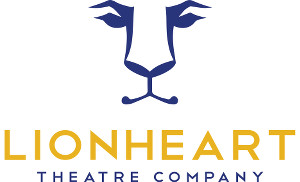When was the last time you left the theater to a chorus of, “Wow, what wonderful lighting effects!” Often, lighting flourishes go unnoticed, but that doesn’t mean they aren’t critical to the public reception of the dramatic performance. Quality lighting can put the finishing touch on your masterpiece, adding that key component for transforming those talented actors into true characters, and the lines and cues into a story. Here are four techniques that demonstrate the power of lighting in theatre.
Three Points
Lighting can do so much more than make an object or actor visible on stage. Three point lighting can completely alter the mood of a scene. Key light, usually the brightest of the three as it is the most important for illumination, strikes the actor head on, enveloping him or her to create the illusion of depth. Fill light is often placed lower, at a 45 degree angle from the key light. Complementing the key light, fill light eliminates harsher shadows cast over facial features. Back light creates an aura effect around the actor, bringing the character to life by separating him or her from the background.
Sometimes, light is notable for its absence. Reducing or eliminating the use of fill and back light can create a sense of stunning foreboding and danger. Strategic shadows leave room for the audience’s imagination to fill in details.
Lighten the Mood
The mind associates colors with specific emotions. Cold blues and grays can be used to instill melancholy or to soothe sadness, while reds and oranges can display a fiery passion or vengeful anger. Foreshadow with dark green or suggest youthful energy with yellow. Use to your advantage the secret associations locked away in the mind since antiquity, such as purple being the color of royalty.
Spot On
Because it is one of the oldest tricks in the script, everyone knows about spotlights. But did you know that a stencil carved into a metal plate, called a gobo, can shape the light you shine for a variety of dramatic effects? Snow, falling leaves, windowpanes, shadowy figures: there is no limit to what you can shine into your scene using gobos.
Be Moved
A theatrical production relies heavily on active audience participation. The imagination is your most loyal ally when staging a play. Effective use of lighting can help you guide your audience to the conclusions you want them to draw. That tragic finale could be much more cathartic with the clever addition of rain. If soaking your performers isn’t for you, one low-cost way to simulate rain is to shine light through a darkroom tray filled with water and shards of glass. Swish a stick through the water and the shimmering kaleidoscope will be sure to dazzle your audience. If mist is more your style, cast light over a screen of the stuff emitted by a fog machine. This can make for an eerie, silent quality and add depth of field to your stage.
There are many excellent techniques showcasing the power that lighting can lend your production. If your child is interested in this and other technical aspects of the theatre, consider enrolling them in our Spotlight Drama Camp this summer!

